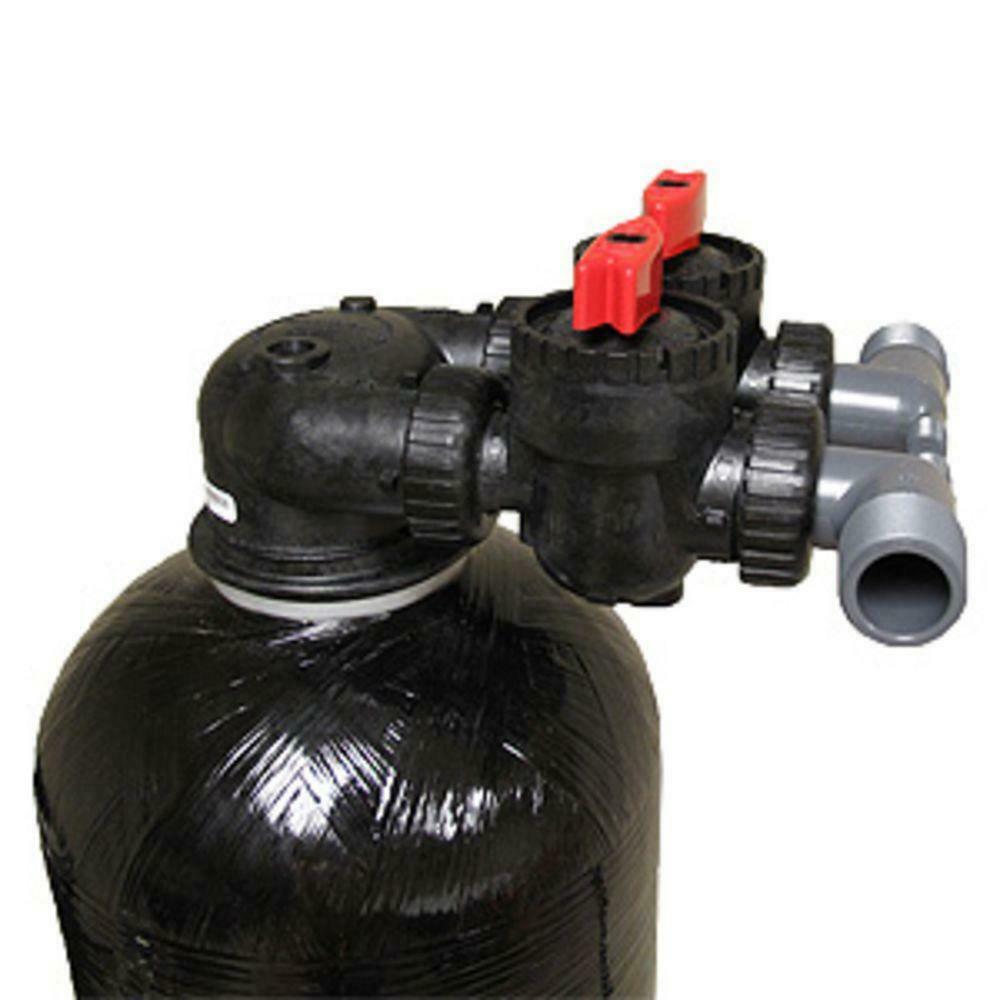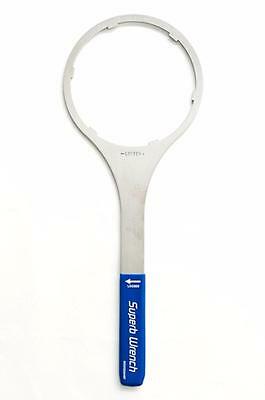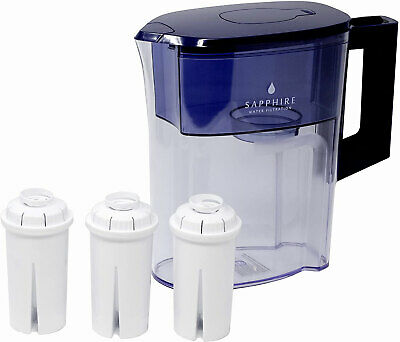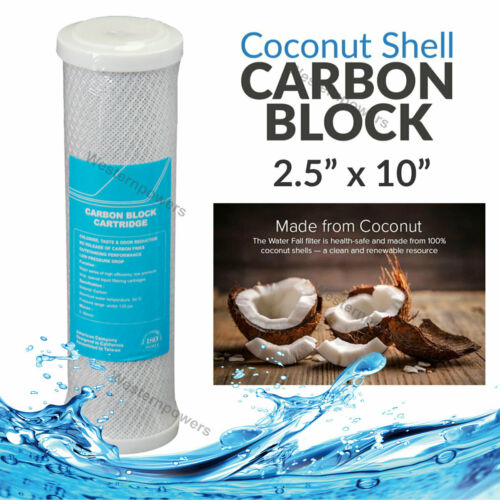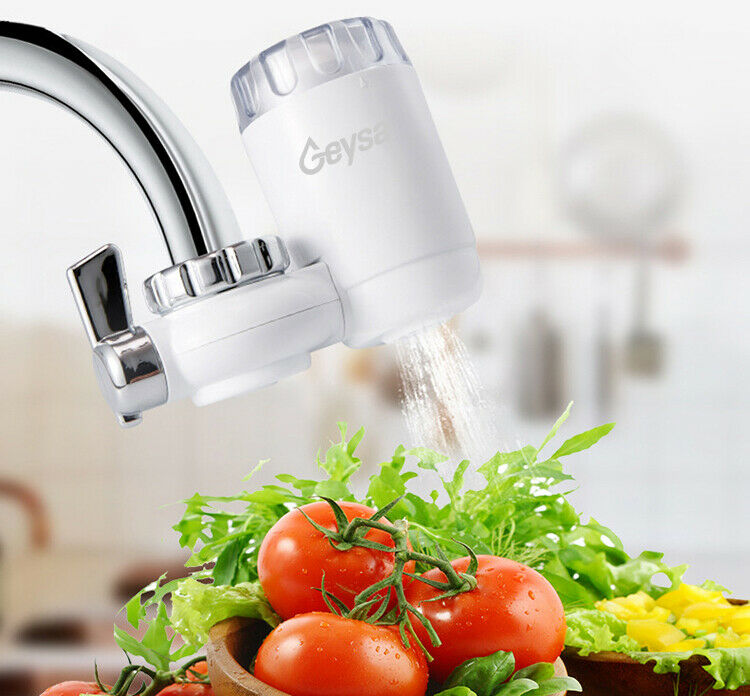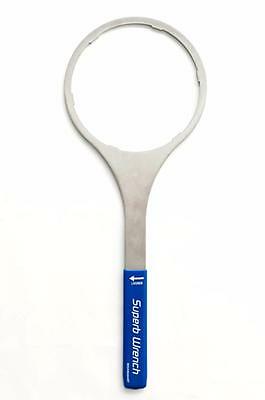-40%
Whole House Water Filter System Coconut Shell Carbon Upflow Valve 1.5 cubic ft
$ 258.71
- Description
- Size Guide
Description
“In/Out” UPflow tank-style water filters works great. Tank-style non-backwashing filters are inexpensive, easy to set up, and easy to maintain.They use no electricity and need no drain connection. Since there's nothing to wear out, they're virtually trouble free. They use exactly the same granular filter media — regular granular activated carbon that are used in our more expensive whole house backwashing filters.
The main requirement for use of these whole house non-backwashing tank-style filters is clean water. If the objective is to remove chlorine from clean city water, a non-backwashing In/Out filter does an exceptional job. Unless the inlet water is very clean and free of rust and other sediment, we recommend that a cartridge-style sediment filter be installed in front of the filter tank.
The In/Out whole house carbon filters are efficient devices. They cost considerably less than their backwashing counterparts and require less maintenance. They save water — no backwashing — and they do not require electricity.
With In/Out units, water simply enters the tank, passes through the media bed, and flows out. There is no cleaning process. Non-backwashing tank filters are arranged so that the water being treated flows upward through the tank, entering at the bottom and exiting at the top. This reversed flow lifts the bed, keeps it fresh, and minimizes channeling. A special straining basket at the top of the tank prevents media loss.
The filters listed below are equipped with In/Out head and elbow adapters as standard equipment. An optional bypass valve is offered. Estimated re-bed interval is every three years or so, depending on usage and chlorine content of your water.
WHOLE HOUSE WATER FILTER
1. Whole-House Filters or Point of Entry:
A whole-house filter is installed at a point on the home’s water supply plumbing that will result in treatment of all water that travels to any faucet or fixture in the home.
A whole-house filter system treats all water traveling to any faucet or fixture in the home. It removes the chemical before it can be ingested, breathed in, or absorbed by the skin during washing or bathing
1.5 CU FT OF GRANULAR ACTIVATED CARBON:
Carbon is a substance that has a long history of being used to absorb impurities and is perhaps the most powerful absorbent known to man. One pound of carbon contains a surface area of roughly 125 acres and can absorb literally thousands of different chemicals. Activated carbon which has a slight electro-positive charge added to it, making it even more attractive to chemicals and impurities. As the water passes over the positively charged carbon surface, the negative ions of the of the contaminants are drawn to the surface of the carbon granules. Activated carbon filters used for home water treatment typically contain either granular activated carbon or powdered block carbon. Although both are effective, carbon block filters generally have a higher contaminant removal ratio. The two most important factors affecting the efficiency of activated carbon filtration are the amount of carbon in the unit and the amount of time the contaminant spends in contact with it. The more carbon the better. Similarly, the lower the flow rate of the water, the more time contaminants will be in contact with the carbon, and the more absorption that will take place. Particle size also affects removal rates. The most common carbon types used in water filtration are bituminous, wood, and coconut shell carbons. While coconut shell carbon typically costs 20% more than the others, it is generally regarded as the most effective of the three. All of our activated carbon filters use coconut shell carbon. There are two principal mechanisms by which activated carbon removes contaminants from water; absorption, and catalytic reduction, a process involving the attraction of negatively-charged contaminants ions to the positively-charged activated carbon. Organic compounds are removed by absorption and residual disinfectants such as chlorine and chloramines are removed by catalytic reduction. Activated carbon filtration is very common in a number of home water treatment systems. It can be used as a stand alone filter to reduce or eliminate bad tastes and odors, chlorine, and many organic contaminants in municipal (pre-treated or chlorinated) water supplies to produce a significantly improved drinking water. It is also very commonly used as a pre-treatment as part of a reverse osmosis system to reduce many organic contaminants, chlorine, and other items that could foul the reverse osmosis membrane. 0.5 block filters are commonly used to remove systs such as giardia and crytosporidium. Activated carbon filters remove/reduce many volatile organic chemicals (VOC), pesticides and herbicides, as well as chlorine, benzene, trihalomethane (THM) compounds, radon, solvents and hundreds of other man-made chemicals found in tap water.
FILTRATION SYSTEM KITS
APPLICATIONS:
Whole House Water Filtration
This unit includes the following:
10 x 54 Mineral Tank (Color Varies)
1.5 CU FT OF GAC Granular Activated Coconut Shell Carbon (
“In/Out” UPflow tank-style water filters works great. Tank-style non-backwashing filters are inexpensive, easy to set up, and easy to maintain.
They use no electricity and need no drain connection. Since there's nothing to wear out, they're virtually trouble free. They use exactly the same granular filter media — regular granular activated carbon that are used in our more expensive whole house backwashing filters.
The main requirement for use of these whole house non-backwashing tank-style filters is clean water. If the objective is to remove chlorine from clean city water, a non-backwashing In/Out filter does an exceptional job. Unless the inlet water is very clean and free of rust and other sediment, we recommend that a cartridge-style sediment filter be installed in front of the filter tank.
The In/Out whole house carbon filters are efficient devices. They cost considerably less than their backwashing counterparts and require less maintenance. They save water — no backwashing — and they do not require electricity.
With In/Out units, water simply enters the tank, passes through the media bed, and flows out. There is no cleaning process. Non-backwashing tank filters are arranged so that the water being treated flows upward through the tank, entering at the bottom and exiting at the top. This reversed flow lifts the bed, keeps it fresh, and minimizes channeling. A special straining basket at the top of the tank prevents media loss.
The filters listed below are equipped with In/Out head and elbow adapters as standard equipment. An optional bypass valve is offered. Estimated re-bed interval is every three years or so, depending on usage and chlorine content of your water.
WHOLE HOUSE WATER FILTER
1. Whole-House Filters or Point of Entry:
A whole-house filter is installed at a point on the home’s water supply plumbing that will result in treatment of all water that travels to any faucet or fixture in the home.
A whole-house filter system treats all water traveling to any faucet or fixture in the home. It removes the chemical before it can be ingested, breathed in, or absorbed by the skin during washing or bathing
1.5 CU FT OF GRANULAR ACTIVATED CARBON:
Carbon is a substance that has a long history of being used to absorb impurities and is perhaps the most powerful absorbent known to man. One pound of carbon contains a surface area of roughly 125 acres and can absorb literally thousands of different chemicals. Activated carbon which has a slight electro-positive charge added to it, making it even more attractive to chemicals and impurities. As the water passes over the positively charged carbon surface, the negative ions of the of the contaminants are drawn to the surface of the carbon granules. Activated carbon filters used for home water treatment typically contain either granular activated carbon or powdered block carbon. Although both are effective, carbon block filters generally have a higher contaminant removal ratio. The two most important factors affecting the efficiency of activated carbon filtration are the amount of carbon in the unit and the amount of time the contaminant spends in contact with it. The more carbon the better. Similarly, the lower the flow rate of the water, the more time contaminants will be in contact with the carbon, and the more absorption that will take place. Particle size also affects removal rates. The most common carbon types used in water filtration are bituminous, wood, and coconut shell carbons. While coconut shell carbon typically costs 20% more than the others, it is generally regarded as the most effective of the three. All of our activated carbon filters use coconut shell carbon. There are two principal mechanisms by which activated carbon removes contaminants from water; absorption, and catalytic reduction, a process involving the attraction of negatively-charged contaminants ions to the positively-charged activated carbon. Organic compounds are removed by absorption and residual disinfectants such as chlorine and chloramines are removed by catalytic reduction. Activated carbon filtration is very common in a number of home water treatment systems. It can be used as a stand alone filter to reduce or eliminate bad tastes and odors, chlorine, and many organic contaminants in municipal (pre-treated or chlorinated) water supplies to produce a significantly improved drinking water. It is also very commonly used as a pre-treatment as part of a reverse osmosis system to reduce many organic contaminants, chlorine, and other items that could foul the reverse osmosis membrane. 0.5 block filters are commonly used to remove systs such as giardia and crytosporidium. Activated carbon filters remove/reduce many volatile organic chemicals (VOC), pesticides and herbicides, as well as chlorine, benzene, trihalomethane (THM) compounds, radon, solvents and hundreds of other man-made chemicals found in tap water.
FILTRATION SYSTEM KITS
APPLICATIONS:
Whole House Water Filtration
This unit includes the following:
10 x 54 Mineral Tank (Color Varies)
1.5 CU FT OF GRANULAR ACTIVATED CARBON: Pre-loaded
Clack upflow valve Assembly (Includes upper basket, By pass valve & Adapater kit for 1" Pipe connection
Good Economical Whole House GAC Carbon Water Filter System. (
Pre-loaded)
Clack upflow valve Assembly (Includes upper basket, By pass valve & Adapater kit for 1" Pipe connection
Good Economical Whole House GAC Carbon Water Filter System.
Used or installed items are not accepted for return.
Titan Water Pro is your "Clean Water Solutions"
Track Page Views With
Auctiva's FREE Counter
